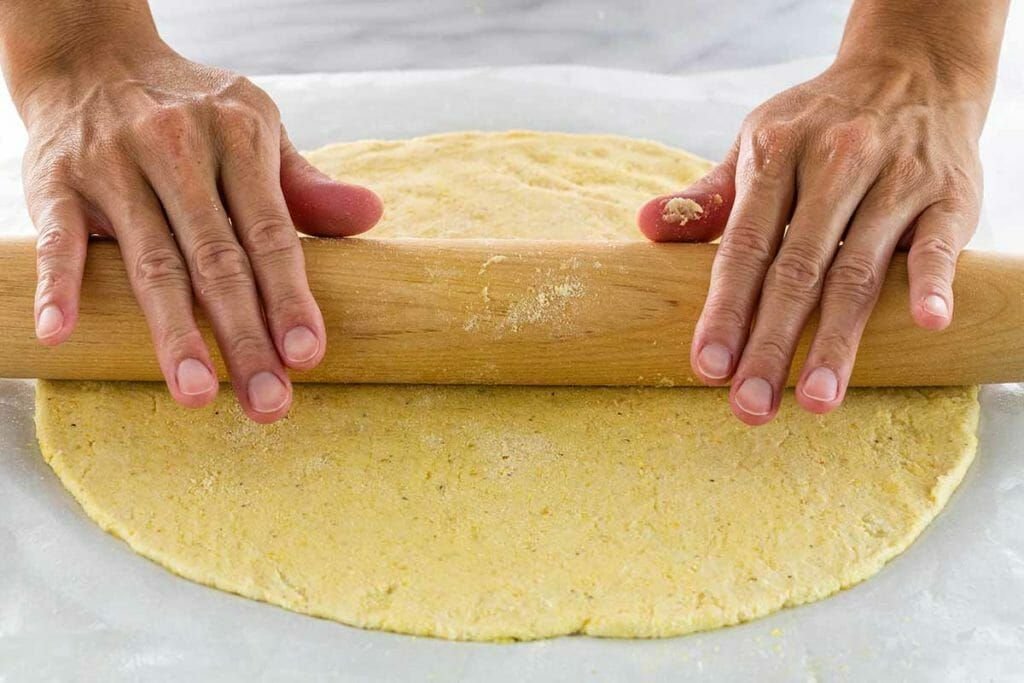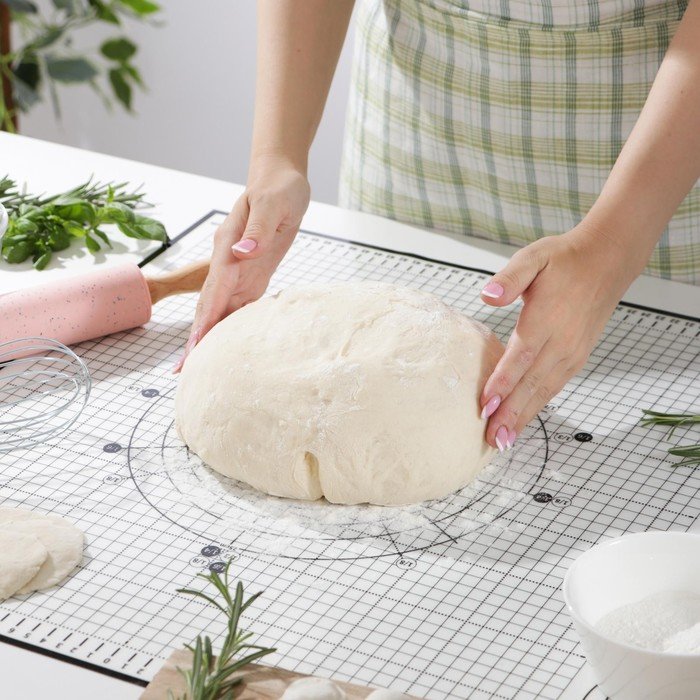A legacy of innovation, quality, and culinary experience.
Read our NewsletterDiscover the different types of pizza dough and how each one affects your pizza texture and flavor. Learn the best dough choices for every pizza.
When it comes to pizza, one of the most important elements that determines the taste and texture is the dough. The right dough can elevate a pizza from good to great, and it is essential to understand the different types of pizza dough available. Whether you’re a seasoned pizza maker or someone just starting to explore the world of pizza, this blog will guide you through the various types of pizza dough, with a special focus on Middle Eastern-style doughs, helping you select the best one for your preferred taste and texture.
Pizza dough is not just a base; it’s the foundation of the entire pizza. The texture of the dough influences how the sauce and toppings sit on the pizza, and the taste of the crust can make or break the pizza. For those who love experimenting in the kitchen recipes, understanding the types of dough can open up endless possibilities for creating the perfect pizza. This post will introduce you to the most popular dough types, including classic, thin-crust, and Middle Eastern-inspired options, so you can choose the one that suits your preferences best.
There are many variations of pizza dough, but here we will focus on the most popular ones, including those commonly used in Middle Eastern-style pizzas. Let’s break down the different doughs and what makes each one unique.
The Neapolitan pizza dough is the gold standard for many pizza lovers. Known for its simplicity and authenticity, it is made from just four basic ingredients: flour, water, salt, and yeast. The dough is left to rise for a few hours and is typically shaped by hand, producing a soft, chewy crust with a slight crispness at the edges.
Characteristics:
Soft and chewy texture
Slightly crispy around the edges
Thin center with a puffy, airy crust
Best for traditional wood-fired ovens
Best For:
Pro Tip: If you don’t have a wood-fired oven, you can still achieve a Neapolitan-style pizza in a regular oven by using a pizza stone to simulate the effect of a brick oven.

If you prefer a crispy pizza with a less chewy base, then thin-crust dough might be your best choice. This dough is rolled out very thin and baked at high temperatures, resulting in a cracker-like crust that’s crisp and light.
Characteristics:
Crisp, crunchy texture
Minimal rise
Light and airy, but very thin
Best For:
Those who prefer a crunchy texture rather than a chewy one.
Ideal for pizzas with heavier toppings, as the thin crust can handle the load without getting soggy.
Pro Tip: If you like your thin crust extra crispy, bake the crust for a few minutes before adding the sauce and toppings. This will help the crust hold up better under the moisture of the toppings.
Sicilian pizza is known for its thick crust, which is more like a focaccia-style dough. It's airy and spongy with a satisfying crunch on the outside. This dough is typically baked in a square or rectangular shape and is often topped with more hearty, robust ingredients.
Characteristics:
Thick, fluffy, and spongy texture
Slightly crispy on the outside
Often baked in a pan, leading to a uniform, square shape
Best For:
Those who love a thick crust with a soft interior.
Great for larger servings or for those who like their pizza filling and substantial.
Pro Tip: Allow the dough to rise longer than usual to get the perfect spongy texture. The longer the rise, the fluffier the dough.
For those looking for a healthier alternative, whole-wheat pizza dough is a great choice. This dough is made with whole wheat flour, which gives it a slightly nutty flavor and a denser texture compared to regular white flour dough.
Characteristics:
Nutty flavor
Denser and more filling than white flour dough
Slightly chewier texture
Best For:
Health-conscious pizza lovers or those looking for a higher-fiber alternative.
Pairs well with vegetable toppings and lighter cheeses.
Pro Tip: Whole wheat dough tends to be a bit denser, so it’s best to let it rest for a longer period to help it rise and become more pliable. You can also mix half whole wheat flour and half white flour for a balanced texture.
In Middle Eastern cuisine, pizzas like Manakeesh (often referred to as "Arabic pizza") are a popular snack or meal. The dough for Manakeesh is soft, slightly chewy, and often topped with spices like za’atar, cheese, or ground meat. The dough for these pizzas is typically made with a similar base to other traditional doughs, but it often incorporates olive oil and yogurt, making it richer and more flavorful.
Characteristics:
Soft and chewy, with a slight tang from yogurt
Thin and flat, but not as crisp as thin-crust dough
Often seasoned with olive oil, garlic, and spices like za'atar or sumac
Best For:
Those who enjoy Middle Eastern flavors and a softer, chewier dough.
Ideal for making Manakeesh with toppings such as cheese, za’atar, or even ground lamb.
Pro Tip: Add a tablespoon of yogurt to your dough recipe to give it that signature Middle Eastern taste and texture. This adds a subtle tang and moisture to the dough, perfect for toppings like cheese or herbs.
Gluten-free pizza dough is perfect for those who are sensitive to gluten but still crave pizza. This dough is made from gluten-free flours like rice flour, almond flour, or a combination of both. The texture is a bit different from traditional pizza dough, often being a bit crumblier, but it can still create a delicious base for pizza.
Characteristics:
Slightly crumbly or chewy texture depending on the flour used
Made from gluten-free flours like rice flour or almond flour
Good option for those with gluten intolerance
Best For:
People with celiac disease or gluten sensitivity.
Ideal for anyone looking for a lighter, crispier crust.
Pro Tip: Make sure you use a good-quality gluten-free flour blend for the best texture. Also, because gluten-free dough tends to be drier, adding extra olive oil to the dough can help it stay moist.

Choosing the right type of pizza dough depends on several factors, including your taste preferences and the type of pizza you want to create. Here are some things to consider:
If you enjoy a soft, chewy crust, go for Neapolitan or Middle Eastern-style pizza dough.
For a crisp, crunchy base, thin-crust or gluten-free dough would be ideal.
If you want something fluffy and hearty, try Sicilian pizza dough.
Whole wheat pizza dough offers a healthier alternative for those looking for more fiber.
Gluten-free dough is perfect for people with gluten intolerance or sensitivities.
Thin-crust dough is better suited for pizzas with light toppings, as it won't hold heavy ingredients well.
Sicilian dough can handle more substantial toppings, like thick cheese or multiple layers of meat and fresh vegetables.
If you're using a wood-fired oven, Neapolitan dough is your best bet for that classic pizza texture.
For conventional ovens, Sicilian dough or whole wheat dough work well, as they provide a hearty, satisfying meal.
Understanding the different types of pizza dough and how they influence the final product is essential for creating the perfect pizza. Whether you prefer a thin, crispy base, a thick and fluffy crust, or a softer Middle Eastern-inspired dough, there’s a dough for everyone. By considering the texture, health considerations, and cooking methods, you can choose the right dough to match your taste and create delicious homemade pizza every time. Happy baking, and enjoy your pizza-making journey!